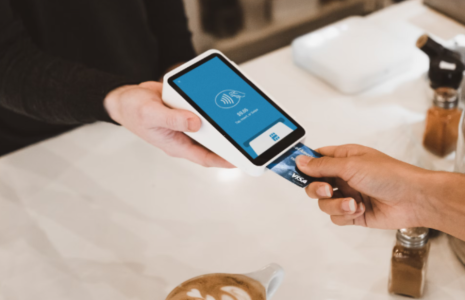Investor shares why your smartphone app is deceiving you at checkout
By
Gian T
- Replies 3
In an age where convenience often trumps all, it's easy to overlook the small print, especially when making daily payments.
A renowned financial expert recently illuminated a common pitfall many Australians may unknowingly fall into, costing them more at the checkout than they might expect.
As digital payments become ubiquitous, understanding the nuances of transaction fees is crucial for customers aiming to make informed financial decisions.
Scott Pape, better known as the Barefoot Investor, has been a trusted voice in personal finance for Australians for years.
His straightforward advice helped many navigate the complexities of saving, investing, and spending wisely.
In his latest revelation, Pape focused on the hidden costs associated with smartphone payment apps.
‘What most people don’t know is that, when they tap, their bank generally defaults that payment through Visa or MasterCard, who pays them a fee – instead of defaulting that payment through the much cheaper bank-owned EFTPOS,’ he said.
‘Talk about a rort!’
The investor pointed out that Australians were charged an additional two per cent every time they used tap payments.
‘Every transaction could be costing you upwards of two hundred clams a year (collectively a $1 billion-a-year rort, according to the Ombudsman),’ Pape commented.
The Barefoot Investor advised returning to more traditional payment methods, such as swiping or inserting your physical debit card.
‘I know it's annoying, but if you swipe and insert your card, you can choose "cheque" or "savings", and it’ll go through the EFTPOS system, which at the bigger retailers means you’ll be less likely to be charged,’ he said.
However, it's important to note not all cards allow this change, and even with the correct settings, some retailers may still impose a surcharge.
For iPhone users, Pape suggests a simple settings tweak:
'On an iPhone, open "Settings", go to "Wallet & Apple Pay", then tap your debit card. Then look for "Payment Option",' he explained.
'It will generally have "MasterCard" or "Visa" preselected, but instead you should select "EFTPOS SAV",'
According to Pape, the underlying issue is the need for government intervention to abolish these surcharge fees altogether, as has been done in the US and the UK.
The push towards a cashless society in Australia has been accelerated by COVID-19, with digital wallet payments skyrocketing from $746 million in 2018 to over $93 billion in 2022.
By the end of 2022, cash made up only 13 per cent of Australian consumer payments, down from 70 per cent in 2007.
While the convenience is undeniable, the associated fees are less so. They are often hidden in the fine print or not immediately apparent during the transaction.
Finder.com.au echoed Pape's concerns, highlighting many consumers are unaware that debit cards can attract the same fees as credit cards during contactless payments.
‘Many shoppers are unaware that Aldi’s 0.5 per cent credit card surcharge also applies to contactless payments made with a Mastercard or Visa debit card,’ the website read.
‘You can avoid this additional fee by not using contactless payments. Instead, make sure to swipe or insert your debit card at the payment terminal.’
Warwick Ponder, previously Executive Manager of Corporate Affairs and Communications at EFTPOS Payments Australia, said that Paywave devices frequently apply a delayed credit surcharge.
Mr Ponder recommended that customers minimise their tapping use because there may be a considerable delay before the deducted amount appears in their accounts.
Cash payment is the only method that doesn't incur any fees or surcharges.
Similarly, ALDI's additional charge on credit card and contactless card transactions raised concerns among shoppers.
ALDI justified the surcharges as a means to maintain lower prices for customers opting for less costly payment methods. More details can be found here.
 Have you been caught out by tap-and-go surcharges? Do you have any strategies for keeping your transaction costs down? We’d love to hear your thoughts in the comments below.
Have you been caught out by tap-and-go surcharges? Do you have any strategies for keeping your transaction costs down? We’d love to hear your thoughts in the comments below.
A renowned financial expert recently illuminated a common pitfall many Australians may unknowingly fall into, costing them more at the checkout than they might expect.
As digital payments become ubiquitous, understanding the nuances of transaction fees is crucial for customers aiming to make informed financial decisions.
Scott Pape, better known as the Barefoot Investor, has been a trusted voice in personal finance for Australians for years.
His straightforward advice helped many navigate the complexities of saving, investing, and spending wisely.
In his latest revelation, Pape focused on the hidden costs associated with smartphone payment apps.
‘What most people don’t know is that, when they tap, their bank generally defaults that payment through Visa or MasterCard, who pays them a fee – instead of defaulting that payment through the much cheaper bank-owned EFTPOS,’ he said.
‘Talk about a rort!’
The investor pointed out that Australians were charged an additional two per cent every time they used tap payments.
‘Every transaction could be costing you upwards of two hundred clams a year (collectively a $1 billion-a-year rort, according to the Ombudsman),’ Pape commented.
The Barefoot Investor advised returning to more traditional payment methods, such as swiping or inserting your physical debit card.
‘I know it's annoying, but if you swipe and insert your card, you can choose "cheque" or "savings", and it’ll go through the EFTPOS system, which at the bigger retailers means you’ll be less likely to be charged,’ he said.
However, it's important to note not all cards allow this change, and even with the correct settings, some retailers may still impose a surcharge.
For iPhone users, Pape suggests a simple settings tweak:
'On an iPhone, open "Settings", go to "Wallet & Apple Pay", then tap your debit card. Then look for "Payment Option",' he explained.
'It will generally have "MasterCard" or "Visa" preselected, but instead you should select "EFTPOS SAV",'
According to Pape, the underlying issue is the need for government intervention to abolish these surcharge fees altogether, as has been done in the US and the UK.
The push towards a cashless society in Australia has been accelerated by COVID-19, with digital wallet payments skyrocketing from $746 million in 2018 to over $93 billion in 2022.
By the end of 2022, cash made up only 13 per cent of Australian consumer payments, down from 70 per cent in 2007.
While the convenience is undeniable, the associated fees are less so. They are often hidden in the fine print or not immediately apparent during the transaction.
Finder.com.au echoed Pape's concerns, highlighting many consumers are unaware that debit cards can attract the same fees as credit cards during contactless payments.
‘Many shoppers are unaware that Aldi’s 0.5 per cent credit card surcharge also applies to contactless payments made with a Mastercard or Visa debit card,’ the website read.
‘You can avoid this additional fee by not using contactless payments. Instead, make sure to swipe or insert your debit card at the payment terminal.’
Warwick Ponder, previously Executive Manager of Corporate Affairs and Communications at EFTPOS Payments Australia, said that Paywave devices frequently apply a delayed credit surcharge.
Mr Ponder recommended that customers minimise their tapping use because there may be a considerable delay before the deducted amount appears in their accounts.
Cash payment is the only method that doesn't incur any fees or surcharges.
Similarly, ALDI's additional charge on credit card and contactless card transactions raised concerns among shoppers.
ALDI justified the surcharges as a means to maintain lower prices for customers opting for less costly payment methods. More details can be found here.
Key Takeaways
- Scott Pape, known as the Barefoot Investor, warned against hidden fees when using smartphone apps to tap-and-go at checkouts.
- Aussies were advised to use physical cards and select 'cheque' or 'savings' to avoid higher transaction fees through EFTPOS.
- Not all cards allow changes in settings to avoid these fees, and some retailers may still apply a surcharge regardless.
- Pape suggested that the Australian government should eliminate such surcharge fees, as has been done in the US and UK, and estimates Australians could save about $200 annually by not tapping their cards or phones.








